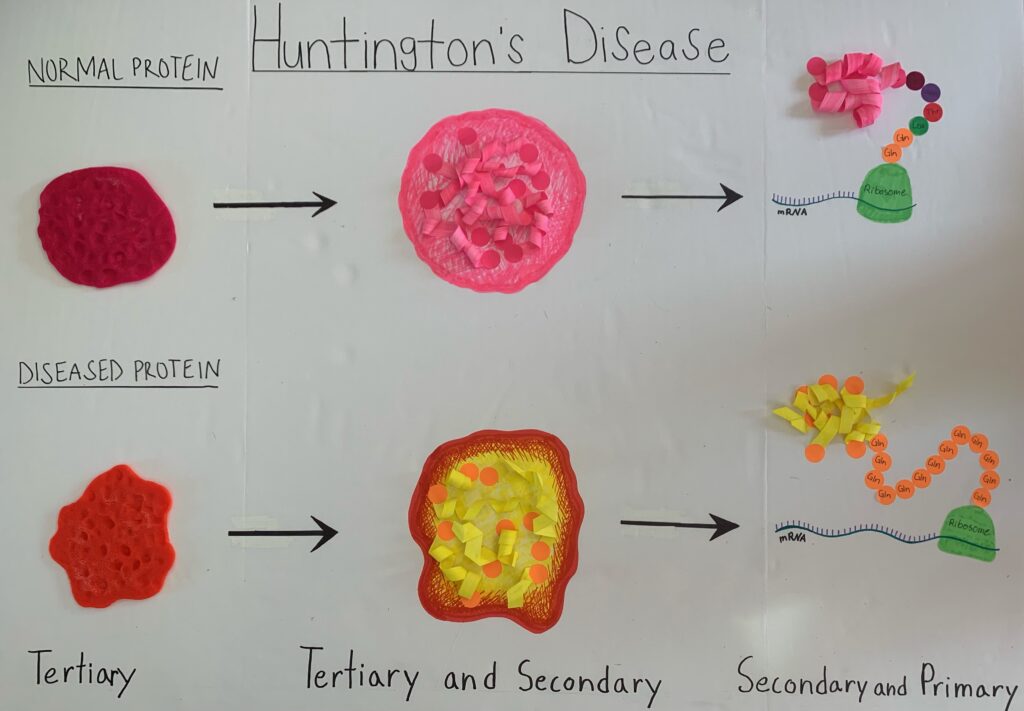In this project, we demonstrated how hydrogen bonds determine the functionality of a protein. We chose to highlight Huntington’s Disease, which is caused by a trinucleotide repeat of the amino acid glutamine, a polar molecule. The extension of the Huntingtin gene rearranges hydrogen bonds in the Huntingtin protein, causing it to misfold. In HD (Huntington’s Disease), the defective protein is toxic to the brain and begins to degrade the neurons. As the neurons die, signals become increasingly hard to transmit which has effects on movement, mood, and motivation. There currently isn’t a cure for Huntington’s, but symptoms can be managed medication to improve quality of life. Our poster shows the importance of hydrogen bonding on the secondary and tertiary structure of a protein and how any deviations can have a significant impact on the health of an organism.


This project depicts an incurable disease called Huntington’s disease. This particular disease affects the signaling to the brain as it degrades the neuron pathways. Currently, those affected can be prescribed medication to manage the progress of neuron degeneration and its effects on movement and the patient’s mood. This project shows what a normal and affected protein looks like as a tertiary, secondary, and primary structure and how the change in infected cells affects the whole system.
This STEAM project focuses on the objectives of hydrogen bonding, macronutrient proteins, and neurons, through the lens of the well-known incurable disease, Huntington’s Disease. The project does this with a tactile visual approach. It consists of a main paper decorated with drawn-on color from markers and pencils and glued-on color and form from different colored paper. There are written-on labels as well. Different states of the protein are represented with different colors and arrangements of paper. The project put normal protein and diseased protein at every level of organization (primary, secondary, tertiary) so viewers can easily compare and contrast the two states to see what effect Huntington’s Disease has. It does this in a unique way by overlapping levels of organization in one image: “Primary + Secondary” is one image, “Secondary + Tertiary” is one image, and finally “Tertiary” alone in one image. Overall, this STEAM project provides an intuitive tactile visual representation of several complicated topics coming together in the important well-known case of Huntington’s Disease.